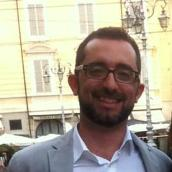Image Processing and Analysis: Trends in Registration, Data Fusion, 3D Reconstruction and Change Detection
A special issue of Remote Sensing (ISSN 2072-4292). This special issue belongs to the section "Remote Sensing Image Processing".
Deadline for manuscript submissions: closed (1 May 2020) | Viewed by 76695
Special Issue Editors
Interests: image matching; image orientation; satellite/airborne/UAV photogrammetry; 3D reconstruction; monitoring; laser scanning; vision metrology
Special Issues, Collections and Topics in MDPI journals
Interests: image analysis; image matching; multi-view reconstruction; laser scanning; point cloud classification; monitoring
Special Issues, Collections and Topics in MDPI journals
Special Issue Information
Dear Colleagues,
Satellite, aerial, and UAV imaging are constantly evolving, both in terms of data volumes and quality. Earth observation programs, both public and private, are making available to different users (private companies, public administrations, and the scientific community) a growing amount of multi-temporal data, often publicly available, at an increased spatial resolution and with a high revisit time. At the opposite end of the platform scale, UAVs, due to their higher flexibility, are beginning to represent a new paradigm for acquiring high resolution information and can offer mapping capacities unachievable up to a few years ago. Due to this large availability of data, the scope of image-based remote sensing applications and the number of active, often unskilled, users has increased consistently in the last years: today, beside traditional application fields such as land usage and environmental monitoring, cultural heritage, archaeology, precision farming, human activities monitoring, and others are emerging research and practical fields of interest. In such fast-evolving context, automated techniques are therefore needed to process and extract relevant information from such a large amount of data.
The Special Issue focuses on presenting the latest advances of innovative image analysis and image processing techniques and their contribution in a wide range of application fields, in an attempt to foresee where they will lead the discipline and practice in the next years. As far as process automation is concerned, it is of the utmost importance to invest in an appropriate understanding of the algorithmic implementation of the different techniques and identify their maturity as well as applications where their use might leverage their full potential. For this reason, special focusing features might be (i) accuracy: the agreement between the reference (check) and measured data (e.g., accuracy of check point in image orientation or accuracy of testing set in data classification); (ii) completeness: the amount of information obtained from the different methodologies and their space/time-distribution; (iii) reliability: the algorithm consistency, intended as stability to noise, and algorithm robustness, intended as estimation of the measurements’ reliability level and capability to identify gross errors; and (iv) processing speed: the algorithm computational load.
Scope includes but is not limited to the following:
- image registration and multi-source data integration or fusion methods;
- cross-calibration of sensors and cross-validation of data/models;
- orientation in a seamless way of images acquired with different platforms;
- object extraction and accuracy evaluation in 3D reconstruction;
- low-cost sensors for mapping and 3D modelling;
- automation in thematic map production (e.g., spatial and temporal pattern analysis, change detection, and definition of specific change metrics);
- automatic or semi-automatic procedures to produce down streaming operational services;
- deep learning methods for data classification and pattern recognition;
Prof. Dr. Riccardo Roncella
Prof. Dr. Mattia Previtali
Guest Editors
Manuscript Submission Information
Manuscripts should be submitted online at www.mdpi.com by registering and logging in to this website. Once you are registered, click here to go to the submission form. Manuscripts can be submitted until the deadline. All submissions that pass pre-check are peer-reviewed. Accepted papers will be published continuously in the journal (as soon as accepted) and will be listed together on the special issue website. Research articles, review articles as well as short communications are invited. For planned papers, a title and short abstract (about 100 words) can be sent to the Editorial Office for announcement on this website.
Submitted manuscripts should not have been published previously, nor be under consideration for publication elsewhere (except conference proceedings papers). All manuscripts are thoroughly refereed through a single-blind peer-review process. A guide for authors and other relevant information for submission of manuscripts is available on the Instructions for Authors page. Remote Sensing is an international peer-reviewed open access semimonthly journal published by MDPI.
Please visit the Instructions for Authors page before submitting a manuscript. The Article Processing Charge (APC) for publication in this open access journal is 2700 CHF (Swiss Francs). Submitted papers should be well formatted and use good English. Authors may use MDPI's English editing service prior to publication or during author revisions.
Keywords
- Image registration
- Change detection
- Pattern recognition
- Hyperspectral
- 3D reconstruction
- Image matching
- Data fusion
- Deep learning
- Multi-sensor
- Object-based image analysis






